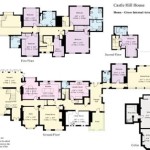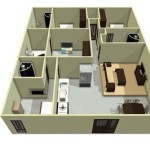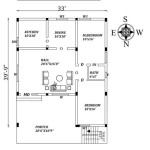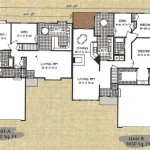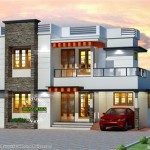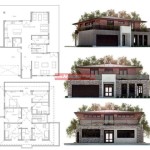Exploring the World of House Plans Through Images
House plans, also known as blueprints or architectural drawings, serve as the foundational guide for constructing a dwelling. These plans meticulously detail the dimensions, layout, and specifications of a building project, providing a visual representation of the intended structure. Examining house plan images offers a valuable insight into the design and functionality of a proposed residence before construction begins.
The availability of digital house plan images has revolutionized the way individuals and builders approach home construction. Online databases, architectural websites, and design platforms now offer a vast collection of house plan images, spanning diverse architectural styles, sizes, and complexities. This accessibility allows for a more informed decision-making process, enabling prospective homeowners to visualize their dream homes and make alterations before committing to costly construction.
Understanding the various components and information conveyed within house plan images is crucial for interpreting the design and functionality of a building. These images typically include floor plans, elevations, sections, and detail drawings, each serving a specific purpose in conveying the overall architectural intent.
Key Elements Depicted in House Plan Images
House plan images are not merely artistic renderings; they are technical documents that communicate critical information about a building's construction. Understanding the key elements depicted in these images is vital for accurate interpretation and informed decision-making.
Floor Plans: Floor plans are arguably the most recognizable and fundamental component of house plan images. They provide a top-down view of each level of the house, illustrating the arrangement of rooms, hallways, and other interior spaces. Dimensions are typically included, indicating the size and shape of each room. Walls, doors, windows, and fixtures like toilets, sinks, and appliances are clearly represented. Understanding the flow of traffic and the spatial relationships between rooms shown in floor plans is crucial for evaluating the practicality of the design.
Elevations: Elevations are two-dimensional drawings that depict the exterior appearance of the house from different perspectives. Typically, front, rear, left, and right elevations are included, showcasing the architectural style, rooflines, window and door placements, and exterior materials. Elevation images provide a visual understanding of the house's aesthetic appeal and how it will integrate with its surroundings. They often include annotations related to exterior finishes, such as siding type, brick color, and roofing material.
Sections: Section drawings provide a vertical cut-through view of the house, revealing the internal structure and relationships between different floors or levels. These images are essential for understanding the ceiling heights, floor thicknesses, and the construction details of walls and foundations. Sections often depict the placement of stairs, chimneys, and other vertical elements, offering insights into the structural integrity and spatial organization of the building.
Detail Drawings: Detail drawings provide magnified views of specific construction elements, such as window details, door jambs, stair railings, or foundation footings. These drawings offer a high level of precision and are crucial for ensuring that critical components are constructed according to specifications. Detail drawings often include annotations indicating the materials, dimensions, and installation methods required for each element.
Beyond these core elements, house plan images may also incorporate site plans, which depict the house's location on the property, including landscaping, driveways, and utility connections. Electrical plans, plumbing plans, and HVAC (Heating, Ventilation, and Air Conditioning) plans are also often included to illustrate the distribution of these essential systems within the house.
Utilizing House Plan Images for Design Customization
The ability to view and analyze house plan images significantly empowers prospective homeowners to customize designs to meet their unique needs and preferences. This interactive approach allows for a more tailored and personalized end result.
Room Configuration Adjustments: Analyzing floor plan images allows one to visualize the layout and flow of the house. If, for instance, a homeowner desires a larger kitchen or a more open living area, examining the floor plan reveals the possibilities and constraints for making these adjustments. Walls can be repositioned, rooms can be combined, or new spaces can be added, all visualized through iterative revisions of the floor plan images.
Exterior Appearance Modifications: Elevations provide a visual representation of the house's exterior. Through studying these images, homeowners can explore different siding materials, roof styles, window placements, and porch designs to achieve their desired aesthetic. Adjustments can be made to enhance curb appeal, match the architectural style of the neighborhood, or improve the energy efficiency of the building.
Material Selection Based on Visuals: House plan images often include annotations that specify the materials to be used in construction. By comparing different images featuring various material combinations, homeowners can visually assess the impact of different choices on the overall look and feel of the house. For example, contrasting images featuring different types of roofing materials or siding colors can help inform decisions about aesthetic preferences and budget considerations.
Adapting to Specific Site Conditions: Site plans, typically included alongside house plans, illustrate the house's orientation on the lot and its relationship to surrounding features. Analyzing these images allows homeowners to consider how the house will interact with the natural landscape, sun exposure, and prevailing winds. This information can be used to optimize the house's orientation for energy efficiency, privacy, and views.
Modern technology increasingly provides opportunities for interactive customization. Some websites offer 3D renderings of house plans allowing users to "walk through" the proposed design to get a better sense of scale and space. Others allow for virtual modification of materials and finishes, making the customization process even more visual and engaging. The use of such images allows for a proactive approach to minimizing the chances of potential surprises during the construction phase.
Navigating the Challenges of House Plan Image Interpretation
While house plan images offer a wealth of information, interpreting them accurately can present challenges, particularly for those unfamiliar with architectural conventions and terminology. Understanding these potential pitfalls and employing strategies to overcome them is essential for effectively utilizing house plan images.
Scale and Proportion: House plan images are drawn to a specific scale, typically indicated on the drawing itself (e.g., 1/4" = 1'0"). It is crucial to understand this scale to accurately interpret the dimensions and proportions of the building and its various components. Misinterpreting the scale can lead to inaccurate estimations of room sizes and spatial relationships.
Symbolism and Conventions: Architectural drawings employ a standardized set of symbols and conventions to represent various building elements, such as doors, windows, toilets, and electrical outlets. Familiarizing oneself with these symbols is necessary for accurately understanding the information conveyed in the drawings. Resources such as architectural drafting manuals and online guides can provide explanations of common architectural symbols.
Interpreting Dimensions and Annotations: House plan images include a multitude of dimensions and annotations that provide specific information about the size, location, and materials of various building elements. Understanding how to read these dimensions and decipher the annotations is crucial for accurately interpreting the design and specifications. It's important to note that dimensions are typically given in feet and inches in imperial units, and in millimeters or meters in metric units.
Considering 3D Reality from 2D Images: House plan images are two-dimensional representations of a three-dimensional space. Visualizing the spatial relationships and the overall feel of the house from these images can be challenging. Techniques like creating sketches, using online 3D modeling tools, or even physically walking through a similar existing space can aid in developing a better understanding of the proposed design.
Seeking Professional Assistance: When encountering difficulties in interpreting house plan images, seeking professional assistance from architects, designers, or experienced builders is highly recommended. These professionals possess the expertise to accurately interpret the drawings, answer questions, and provide guidance on the design and construction process.
In conclusion, house plan images are a powerful tool for visualizing and understanding the design and functionality of a proposed residence. By carefully examining these images, considering their key elements, customizing designs to meet individual needs, and navigating the challenges of interpretation, prospective homeowners can make informed decisions and create a home that truly reflects their vision.

House Plans How To Design Your Home Plan

Floor Plans Types Symbols Examples

House Plan 45467 Ranch Style With 1680 Sq Ft 4 Bed 2 Bath

Simple 3 Room House Plan Pictures 4 Nethouseplans Building Plans Designs With Small Modern

House Plan Maywood Sater Design Collection

House Plans How To Design Your Home Plan

Four Bedroom House Plans 4 Designs Floor The Designers

Where You Can Buy House Plans Live Home 3d

Plan 44207 Modern Prairie House With 2499 Sq Ft 4 Bedroom

Cottage Plan 400 Square Feet 1 Bedroom Bathroom 1502 00003

